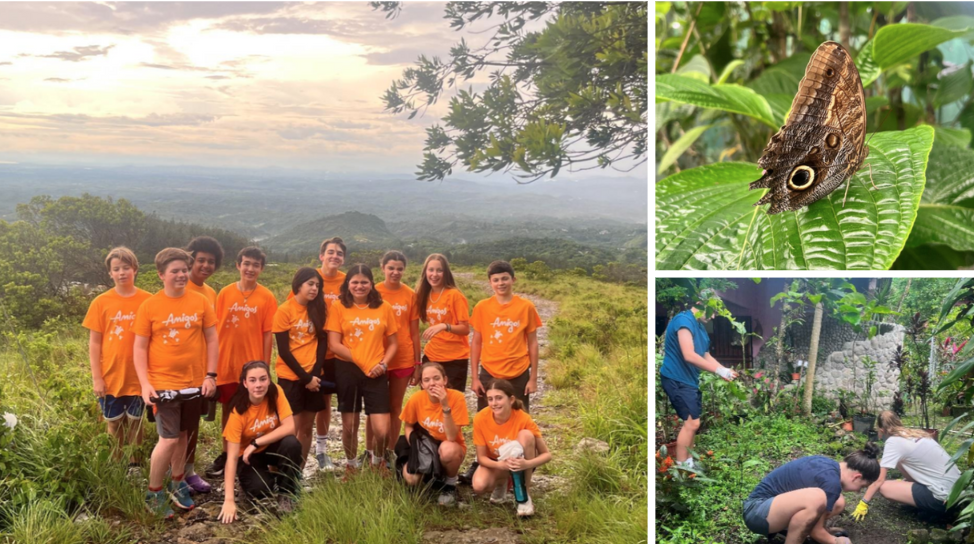El Pacífico: Our Days in Valle de Antón

Authors: Dane, August, RJ, Mikaela
Formation of Valle de Antón
Valle de Antón formed when two tectonic plates converged and created a volcano. This volcano erupted roughly 34,000 years ago, forming a large crater. For many years, rain pooled inside the crater, and eventually erosion caused the water to flow out of the crater. As the crater drained, it left behind fertile soil ideal for a wide variety of plants and animals to live in. Currently this area is known as Valle de Antón, which one of the most biodiverse ecosystems on the planet!
El Valle de Antón se formó cuando dos placas tectónicas convergieron y crearon un volcán. Este volcán entró en erupción hace unos 34.000 años, formando un gran cráter. Durante muchos años, la lluvia se acumuló en el interior del cráter y, con el tiempo, la erosión hizo que el agua fluyera fuera del cráter. Al drenarse, el cráter dejó tras de sí un suelo fértil ideal para que viviera una gran variedad de plantas y animales. En la actualidad, esta zona se conoce como Valle de Antón, uno de los ecosistemas con mayor biodiversidad del planeta!
Orchids y El Orquideario
Many types of plants and animals call Valle de Antón home. Among these, orchids are special. There are many species of this plant such as Encyclia cordigera, and Maxillaria camaridi. Orchids are a unique type of flower because more often than not, you will find them growing on trees or other plants instead of growing on the ground. There is an organization called Orquidiario which is run by a local Panamanian named Viviana and her partner Kay. They cultivate these flowers and plant and harvest the orchids twice a year to help reforest our planet!
El Valle de Antón es el hogar de muchos tipos de plantas y animales. Entre ellos destacan las orquídeas. Hay muchas especies de esta planta, como la Encyclia cordigera y la Maxillaria camaridi. Las orquídeas son un tipo de flor única, ya que la mayoría de las veces crecen en árboles o en otras plantas en lugar de en el suelo. Existe una organización llamada Orquidiario, dirigida por Viviana y Kay. Cultivan estas flores y las plantan y cosechan dos veces al año para ayudar a reforestar nuestro planeta.
Butterflies – Mariposas
On our second to last day in Valle de Antón, we visited the Mariposario. There we learned about the life cycle of the butterfly, including the three stages of their life. The first stage takes place as a caterpillar, eating their egg and the plant they laid on. Second, after the caterpillars consume the plant, they will attach themselves to a stick. Then, they push out a cocoon housing their new body. Overtime the butterfly will emerge from the cocoon and spread its wings to fly.
En nuestro penúltimo día en Valle de Antón, visitamos el Mariposario. Allí aprendimos sobre el ciclo vital de la mariposa, incluyendo las tres etapas de su vida. La primera etapa tiene lugar como oruga, comiendo su huevo y la planta en la que lo ha puesto. En segundo lugar, después de que las orugas consuman la planta, se adhieren a un palo. A continuación, expulsan un capullo con su nuevo cuerpo. Con el tiempo, la mariposa saldrá del capullo y desplegará las alas para volar.

